Reciprocal intraepithelial interactions between TP63 and hedgehog signaling regulate quiescence and activation of progenitor elaboration by mammary stem cells
- PMID: 18292212
- PMCID: PMC3778935
- DOI: 10.1634/stemcells.2007-0691
Reciprocal intraepithelial interactions between TP63 and hedgehog signaling regulate quiescence and activation of progenitor elaboration by mammary stem cells
Abstract
TP63 is required for preservation of epithelial regenerative stasis and regulates the activity of diverse genetic pathways; however, specific effector pathways are poorly understood. Data presented here indicate that reciprocal regulatory interactions between hedgehog signaling and TP63 mediate stage-specific effects on proliferation and clonigenicity of separable enriched mammary stem and progenitor fractions. Analysis of DeltaN-p63 and TA-p63 indicates segregated expression in mammary stem and progenitor fractions, respectively, demonstrating that differential TP63 promoter selection occurs during elaboration of mammary progenitors by mammary stem cells. This segregation underlies mammary progenitor-specific expression of Indian Hedgehog, identifying it as a binary transcriptional target of TP63. Hedgehog activation in vivo enhances elaboration of mammary progenitors and decreases label retention within mammary stem cell-enriched fractions, suggesting that hedgehog exerts a mitogenic effect on mammary stem cells. Hedgehog signaling promotes differential TP63 promoter usage via disruption of Gli3 or Gli3(R) accumulation, and shRNA-mediated disruption of Gli3 expression was sufficient to alter TP63 promoter usage and enhance clonigenicity of mammary stem cells. Finally, hedgehog signaling is enhanced during pregnancy, where it contributes to expansion of the mammary progenitor compartment. These studies support a model in which hedgehog activates elaboration and differentiation of mammary progenitors via differential TP63 promoter selection and forfeiture of self-renewing capacity.
Conflict of interest statement
The authors indicate no potential conflicts of interest.
Figures
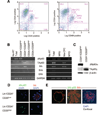
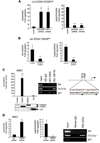

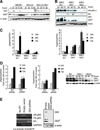
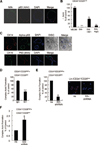
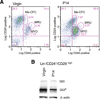

Similar articles
-
p63 Sustains self-renewal of mammary cancer stem cells through regulation of Sonic Hedgehog signaling.Proc Natl Acad Sci U S A. 2015 Mar 17;112(11):3499-504. doi: 10.1073/pnas.1500762112. Epub 2015 Mar 4. Proc Natl Acad Sci U S A. 2015. PMID: 25739959 Free PMC article.
-
Intraepithelial paracrine Hedgehog signaling induces the expansion of ciliated cells that express diverse progenitor cell markers in the basal epithelium of the mouse mammary gland.Dev Biol. 2012 Dec 1;372(1):28-44. doi: 10.1016/j.ydbio.2012.09.005. Epub 2012 Sep 20. Dev Biol. 2012. PMID: 23000969
-
MiR203 mediates subversion of stem cell properties during mammary epithelial differentiation via repression of ΔNP63α and promotes mesenchymal-to-epithelial transition.Cell Death Dis. 2013 Feb 28;4(2):e514. doi: 10.1038/cddis.2013.37. Cell Death Dis. 2013. PMID: 23449450 Free PMC article.
-
The hedgehog signaling network, mammary stem cells, and breast cancer: connections and controversies.Ernst Schering Found Symp Proc. 2006;(5):181-217. doi: 10.1007/2789_2007_051. Ernst Schering Found Symp Proc. 2006. PMID: 17939302 Review.
-
Hedgehog and Gli signaling in embryonic mammary gland development.J Mammary Gland Biol Neoplasia. 2013 Jun;18(2):133-8. doi: 10.1007/s10911-013-9291-7. Epub 2013 May 16. J Mammary Gland Biol Neoplasia. 2013. PMID: 23677624 Free PMC article. Review.
Cited by
-
The effects of Hedgehog on the RNA-binding protein Msi1 in the proliferation and apoptosis of mesenchymal stem cells.PLoS One. 2013;8(2):e56496. doi: 10.1371/journal.pone.0056496. Epub 2013 Feb 13. PLoS One. 2013. PMID: 23418578 Free PMC article.
-
Two Sides of the Same Coin: The Role of Developmental pathways and pluripotency factors in normal mammary stem cells and breast cancer metastasis.J Mammary Gland Biol Neoplasia. 2020 Jun;25(2):85-102. doi: 10.1007/s10911-020-09449-0. Epub 2020 Apr 22. J Mammary Gland Biol Neoplasia. 2020. PMID: 32323111 Free PMC article. Review.
-
Ptch1 is required locally for mammary gland morphogenesis and systemically for ductal elongation.Development. 2009 May;136(9):1423-32. doi: 10.1242/dev.023994. Epub 2009 Mar 18. Development. 2009. PMID: 19297414 Free PMC article.
-
The dual role of p63 in cancer.Front Oncol. 2023 Apr 27;13:1116061. doi: 10.3389/fonc.2023.1116061. eCollection 2023. Front Oncol. 2023. PMID: 37182132 Free PMC article. Review.
-
p63: A Master Regulator at the Crossroads Between Development, Senescence, Aging, and Cancer.Cells. 2025 Jan 3;14(1):43. doi: 10.3390/cells14010043. Cells. 2025. PMID: 39791744 Free PMC article. Review.
References
-
- Tataria M, Perryman SV, Sylvester KG. Stem cells: Tissue regeneration and cancer. Semin Pediatr Surg. 2006;15:284–292. - PubMed
-
- Beachy PA, Karhadkar SS, Berman DM. Tissue repair and stem cell renewal in carcinogenesis. Nature. 2004;432:324–331. - PubMed
-
- Krtolica A. Stem cell: Balancing aging and cancer. Int J Biochem Cell Biol. 2005;37:935–941. - PubMed
-
- Pardal R, Clarke MF, Morrison SJ. Applying the principles of stem-cell biology to cancer. Nat Rev Cancer. 2003;3:895–902. - PubMed
Publication types
MeSH terms
Substances
Grants and funding
LinkOut - more resources
Full Text Sources
Medical

